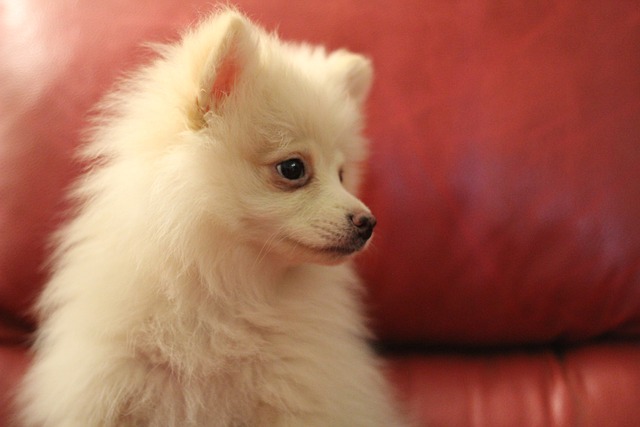
What is the best parasite prevention for dogs
If you’ve ever found a tiny black flea darting through your puppy’s fur or noticed your dog gnawing at their paws nonstop, you know how frustrating parasites can be.
When we gaze into a dog's eyes, those clear pupils resemble lakes reflecting stars, brimming with trust and dependence on the world. Yet, these windows to the soul also require careful attention—from daily cleaning of secretions to preventing special eye conditions, every gentle wipe is a response to that trust. A dog's eye structure is delicate and intricate, with tissues like the conjunctiva, cornea, and tear glands working together to form the first line of defense against external harm. Our responsibility is to use professional care knowledge and abundant love to build a healthy barrier for these eyes.
Understanding the physiological characteristics of a dog's eyes is the foundation of proper cleaning. The surface of a dog's eyeball is covered by a transparent cornea, much like a camera lens—any minor damage can affect vision. The conjunctiva, a mucous membrane covering the inner eyelids and the front of the eyeball, is rich in blood vessels and nerves, making it highly sensitive to irritation. Tears secreted by the lacrimal glands not only moisten the eyes but also contain antibacterial substances like lysozyme, providing cleaning and protection. Different breeds have varying eye structures: brachycephalic breeds like Pekingese and Bulldogs, with their protruding eyes, are more prone to tear stains due to excessive tear overflow, while long-haired breeds like Shih Tzus and Maltese often experience increased secretions due to eye irritation from surrounding fur. When a dog frequently rubs its eyes with its paws or shows abnormal discharge, it’s a signal for care—just like humans tearing up when something gets in their eyes, requiring our prompt attention.
Preparing the right cleaning tools is the first step. Opt for pet-specific eye wipes or cotton balls, avoiding human wipes that may contain irritating ingredients like alcohol or fragrances. One meticulous owner shared that she soaks cotton balls in lukewarm water (around 38°C, close to a dog’s body temperature) and wrings them to a semi-dry state to reduce resistance. For dogs prone to tear stains, specialized tear stain cleaners—often containing antibacterial and mild bleaching agents—can safely and effectively lighten stains. Before cleaning, prepare a towel for wiping the dog’s face and some favorite treats as a post-cleaning reward, creating positive associations with the process.

Mastering the correct cleaning steps makes care more effective. Start by ensuring the dog is in a comfortable position—sitting on the floor with its head gently resting on your lap while speaking softly to relax it. Lift the upper eyelid lightly with one hand and use a damp cotton ball or wipe to clean from the inner to the outer corner, avoiding back-and-forth motions that could push debris deeper. For hardened crusts, soften them with warm water before gentle removal to prevent skin damage. An experienced owner suggests massaging the tear gland area during cleaning to help unclog tear ducts and reduce staining, using moderate pressure to avoid discomfort. Always use a fresh wipe or cotton ball for each eye to prevent cross-contamination. Stay patient and gentle; if the dog resists, pause to soothe it before continuing.
Cleaning precautions are crucial for eye health. Avoid direct contact between cleaning tools and the eyeball to prevent injury. If a cotton ball or wipe accidentally enters the eye, calmly lift the eyelid to remove it—persistent blinking or tearing warrants a vet visit. Overcleaning can disrupt the eye’s natural microbiome, increasing infection risks; once daily is sufficient (twice for tear-prone dogs). Monitor for abnormalities like redness, cloudiness, or uneven pupils, which may indicate disease. One attentive owner spotted a corneal ulcer during cleaning and sought immediate treatment, preventing complications.
Special cases demand extra care. Post-eye surgery (e.g., enucleation or entropion correction), follow the vet’s instructions strictly for medicated cleansers to prevent infection. Senior dogs, prone to cataracts, require gentler cleaning and close observation of vision changes.
Completing an eye-cleaning session and seeing a dog’s eyes regain clarity—followed by a grateful nuzzle—brings immeasurable fulfillment. Those tender morning wipes, patient reassurances during resistance, and late-night research for the right products all crystallize into the trust shining in a dog’s eyes. Cleaning isn’t just about hygiene; it’s honoring a bond. With expertise and love, we safeguard these eyes that gaze at us, ensuring they see the world’s beauty—and we, in turn, see their unwavering devotion and warmth.

If you’ve ever found a tiny black flea darting through your puppy’s fur or noticed your dog gnawing at their paws nonstop, you know how frustrating parasites can be.

That pit in your stomach as you grab your keys, hearing the frantic scratching at the door already starting. The drool puddles,

When we gaze into a dog's eyes, those clear pupils resemble lakes reflecting stars, brimming with trust and dependence on the world.

On a peaceful night, as the world gradually falls asleep, the dog at home should also be peacefully sleeping in its warm nest. However, for dogs that suffer from nighttime separation anxiety,

When we happily welcome a Labrador puppy into our home, looking at its chubby body and unsteady steps, our hearts are filled with anticipation for its future growth.

When you joyfully welcome a furry teddy bear into your home, its round eyes, curly fur, and every move melt your heart. However, as time passed, dog hair began to dance around the house,